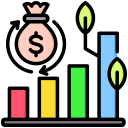Rewriting Growth: Innovative Approaches to Sustainability in Reporting Economic Growth
Today’s chosen theme: Innovative Approaches to Sustainability in Reporting Economic Growth. Welcome to a space where numbers meet nuance, and growth is measured by shared prosperity, resilient ecosystems, and credible, data-rich stories. Join us, subscribe, and help shape smarter indicators that truly matter.


Redefining What We Count
Move from a single financial lens toward natural, social, human, and produced capital accounts. When forests, skills, and trust are counted, leaders see trade-offs more clearly, financing flows shift, and growth strategies become grounded, durable, and investable.
Redefining What We Count
Integrate safe ecological ceilings and social foundations directly into dashboards. This makes overuse of resources visible, sets credible thresholds, and ensures economic expansion aligns with climate stability, biodiversity protection, and minimum living standards for everyone.



Climate and Nature on the Same Ledger
From TCFD to TNFD: Unified Scenario Analysis
Stress-test portfolios for physical climate hazards and nature loss simultaneously. Map revenue exposure to water scarcity, pollinator decline, and transition policies, then disclose credible adaptation pathways that unlock financing while protecting ecosystems and long-term productivity.
Scope 3, Avoided Emissions, and Durable Removals
Report full value-chain emissions with consistent boundaries, then separate avoided emissions from permanent carbon removals. Include permanence, additionality, and leakage assessments so stakeholders understand which strategies genuinely reduce atmospheric concentrations over meaningful time horizons.
Water, Soil, and True‑Cost Accounting
Quantify externalities like depletion and nutrient runoff in monetary terms, linking them to operational decisions. One agribusiness used true-cost insights to shift irrigation practices, lowering input risk while presenting investors with transparent, performance-backed stewardship outcomes.
People at the Heart of Growth
Track worker reskilling rates, wage progression, job quality, and regional support where industries are decarbonizing. Reporting these elements builds trust with unions, communities, and investors who want climate ambition paired with real social safeguards.
People at the Heart of Growth
Co-create indicators with local communities, honoring consent and governance over data. Participatory mapping reveals lived impacts, strengthens legitimacy, and often surfaces solutions faster than spreadsheets alone. Invite residents to co-author the next chapter of your report.
People at the Heart of Growth
Move beyond supplier certifications to track living wages, grievance resolution times, and safety near misses. Evidence-based improvement plans beat glossy claims. If you have a supplier success story, share it, and let others learn practical steps.
Material Flow Analysis and Circularity Rates
Map inputs, uses, losses, and recirculation to calculate product and portfolio circularity. Highlight hotspots for redesign. When teams see leakage clearly, incentives align to cut costs, emissions, and dependency on volatile raw materials.
Design for Disassembly and Recovery Metrics
Report component reuse rates, refurbishment yields, and critical material recovery. A lighting manufacturer used modular casings to quadruple reuse, turning service revenue into a sustainability headline customers wanted to share and competitors struggled to match.

Double Materiality and Standard Alignment
Combine impact materiality with financial materiality to capture risks and effects. Align GRI, ISSB, and sector-specific guidance so readers can compare like with like, cutting confusion and raising the signal-to-noise ratio in complex disclosures.

Digital Audit Trails and Traceability
Use immutable logs, granular timestamps, and chain-of-custody data to verify claims. One food exporter integrated batch-level provenance, shrinking audit cycles and converting skeptical buyers with transparent, machine-readable proof instead of vague assurances.
Storytelling That Moves Policy and People
Humanizing Dashboards with Ground‑Level Voices
Add worker interviews, farmer diaries, and citizen science notes alongside charts. When a coastal mayor saw biodiversity heatmaps paired with a fisher’s testimony, zoning reform gained support overnight, turning a fragile estuary into a shared priority.
Interactive, Personalized Views for Stakeholders
Build role-based report layers for communities, investors, and policymakers. Let readers filter by region, risk, and opportunity, then download the evidence. Interaction boosts understanding—and reveals what audiences actually care about for the next iteration.
Feedback Loops and Continuous Improvement
Invite comments, publish responses, and track which suggestions you implement. Treat every report as a prototype. When readers see their ideas reflected, engagement rises, and indicators evolve into living tools that guide real-world decisions.
